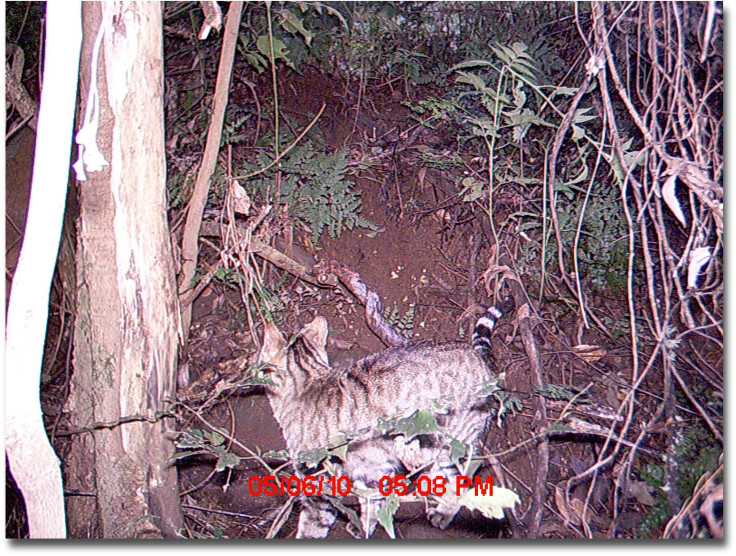High-tech ‘grooming traps’ seek to win battle against feral cats in Australian deserts
New method drives feral cats to lick themselves to their death

A robotic contraption may just be the key to finally cull feral cats, which have been considered a serious threat to endangered species across Australia, according to an ecologist.
Taking advantage of cats’ hygienic habits, John Read has come up with grooming traps, which can identify feral cats and spray their fur with poison. Since cats instinctively clean off their fur using their tongue, they will accidentally kill themselves by licking off the poison.
The project, which took him seven years to finish, is now activated in a nature reserve in south-west Queensland, according to a report by The Guardian. The laser rangefinders work by detecting motion, and is particularly designed to trigger when cats move in front of it. It distinguishes cats from other animals based on height and length, among other factors.
Read also employed other measures to ensure that the robotic traps won’t harm native animals. For example, the invention uses 1080 poison that occurs naturally in some Australian plants, making it less likely to kill a native animal. Since the poison needs to be licked off by an animal for it to take effect, other animals who are not naturally groomers have less chances of being affected by it, unlike cats.
In addition, Read has built the grooming traps with speakers that emit recorded sounds of animals that specifically attract cats, such as rats and cats in distress.
The first live grooming trap was switched in Pullen Pullen reserve, bought by Bush Heritage Australia to protect the night parrot. Similar rangefinders will also be installed in Venus Bay and Wilpena in South Australia. “The three trial locations are all part of the same trial to test and optimise the traps before we will hopefully redesign and manufacture 50 or more traps for a bigger trial at a wider range of sites,” Read told The Guardian.
Feral cats contribute to the extinction of numerous birds, mammals and reptiles worldwide. Last year, the Australian federal government announced its plan to kill 2 million feral cats by 2020 to prevent further extinction of the native species of the other animals.
[READ: “Predation Alert: Australian Federal Government vs 'Feral Cats'”]
In a study conducted by Tim Doherty and his colleagues from Edith Cowan University, cats have been implicated in the extinction of at least 20 mammal species and sub-species in Australia. Doherty and his team found that feral cats eat around 400 different vertebrates, which includes birds, reptiles, marsupials, and mammals.
Large-scale control of feral cats is very difficult, Doherty wrote in an article published by The Conversation. “The use of poison baits can reduce cat density, but even low levels of cat predation can exterminate threatened mammal populations,” he said. “Non-lethal methods have traditionally been overlooked in the fight against invasive predators, such as the feral cat. However, new research suggests that smart fire and grazing management can help preserve the natural shelters that provide native animals with refuge from predators.”





















